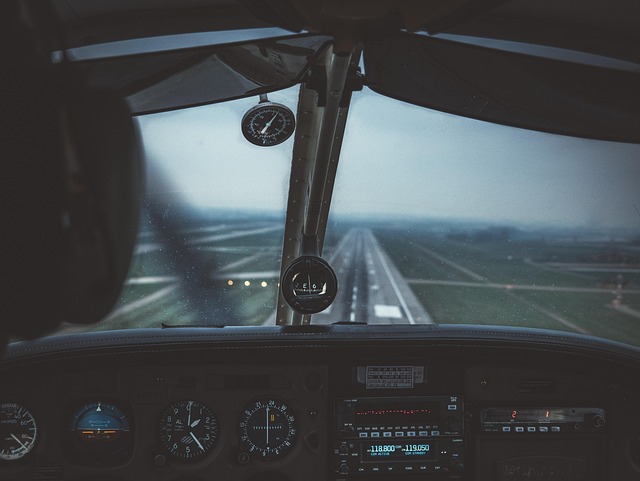Pilot Training for Seniors: A Complete Guide to Starting an Aviation Career
Embarking on a pilot training journey later in life offers unique rewards and challenges for seniors. While the aviation industry traditionally favors younger candidates, many flight schools now welcome older students who bring valuable life experience and dedication to the cockpit. This comprehensive guide explores how seniors can successfully navigate pilot training programs and pursue their aviation dreams.

Pilot Training for Seniors: A Complete Guide to Starting an Aviation Career
Pursuing a pilot’s license and aviation career in your senior years might seem daunting, but it’s entirely possible with the right approach and expectations. The aviation industry values experience and maturity, qualities that seniors naturally possess. While certain physical requirements must be met, many seniors successfully complete pilot training programs and find rewarding opportunities in various aviation sectors. This guide provides essential information for older adults considering this exciting career transition.
Understanding Geographic and Logistical Factors in Pilot Training
Location plays a crucial role in your pilot training journey. Flight schools are typically situated near airports, ranging from small regional airfields to major international hubs. When selecting a training location, consider factors such as weather patterns, airspace complexity, and proximity to your residence. Regions with consistent, favorable weather conditions like the southwestern United States offer more reliable training days, while coastal areas might present challenges with fog and marine layers.
Logistical considerations extend beyond location. Evaluate transportation options to and from the flight school, especially if you’ll be commuting regularly. Some flight schools offer accommodation packages or partnerships with nearby housing facilities, which can be beneficial for intensive training periods. Additionally, investigate the availability of simulators and training aircraft at each location, as these resources significantly impact the quality and efficiency of your training experience.
Licensing and Post-Training Considerations for Senior Pilots
The licensing pathway for pilots involves several stages, beginning with a Student Pilot Certificate and progressing through Private Pilot License (PPL), Instrument Rating, Commercial Pilot License (CPL), and potentially an Airline Transport Pilot License (ATPL). For seniors, it’s important to understand that the Federal Aviation Administration (FAA) does not impose upper age limits for private, recreational, or commercial pilot certificates. However, commercial pilots flying for airlines under FAR Part 121 operations face mandatory retirement at age 65.
Post-training considerations should include a realistic assessment of employment opportunities. While major airlines may have hiring policies that favor younger pilots with longer potential career spans, numerous aviation sectors welcome experienced pilots of all ages. These include charter operations, corporate flight departments, flight instruction, aerial photography, agricultural aviation, and various specialized flying roles. Many seniors find particular satisfaction in flight instruction, where they can combine their newly acquired aviation skills with their lifetime of experience.
How to Become an Airline Pilot Later in Life
Becoming an airline pilot as a senior requires strategic planning and realistic expectations. The process begins with obtaining the necessary certifications, which typically include a Commercial Pilot License with multi-engine and instrument ratings, followed by an Airline Transport Pilot License. These qualifications require significant investment in time and finances—expect to accumulate at least 1,500 flight hours for the ATPL, the minimum requirement for most airline positions.
While major commercial airlines may have hiring practices that favor younger candidates with longer career horizons, regional airlines and charter operations often value maturity and life experience. Some seniors successfully transition to airline careers by starting with regional carriers, which can provide valuable experience and potentially lead to opportunities with larger airlines. Networking becomes particularly important; connections made through flight schools, aviation organizations, and industry events can open doors that might otherwise remain closed to older candidates.
Medical Requirements and Age Considerations
One of the most significant considerations for senior pilot trainees is meeting medical requirements. To fly solo or earn a pilot’s license, you must obtain an FAA medical certificate. The class of medical certificate required depends on your aviation goals: third-class for recreational flying, second-class for commercial operations (except airlines), and first-class for airline transport pilots.
Seniors should approach the medical certification process proactively. Schedule a consultation with an Aviation Medical Examiner (AME) before formally applying for a medical certificate. This allows you to address potential issues before they become part of your official record. Common age-related concerns include cardiovascular health, vision changes, and medication use. While certain conditions may require special issuance procedures, many seniors successfully maintain their medical certification through proper health management and regular consultations with aviation-knowledgeable healthcare providers.
Financial Investment and Training Options
Pilot training represents a significant financial commitment, particularly for seniors who may be on fixed incomes or approaching retirement. The cost structure varies widely depending on the type of training program, geographic location, and training timeline. A complete professional pilot training program leading to commercial certification typically ranges from $60,000 to $100,000, while a private pilot license might cost between $10,000 and $15,000.
| Training Program Type | Approximate Cost | Duration | Provider Examples |
|---|---|---|---|
| Private Pilot License | $10,000-$15,000 | 3-6 months | ATP Flight School, FlightSafety International |
| Commercial Pilot Program | $30,000-$50,000 | 6-12 months | CAE, American Flyers |
| Complete ATP Program | $60,000-$100,000 | 18-24 months | ATP Flight School, L3Harris Airline Academy |
| Part-Time Training | $12,000-$18,000 | 12-18 months | Local flight schools, aero clubs |
Prices, rates, or cost estimates mentioned in this article are based on the latest available information but may change over time. Independent research is advised before making financial decisions.
For seniors, accelerated programs might offer advantages by condensing training into a shorter timeframe, potentially reducing overall costs and facilitating quicker entry into the job market. Part-time training options allow for a more gradual financial outlay but typically extend the overall training period. Some flight schools offer financing options or accept VA benefits for qualified veterans, which can significantly reduce out-of-pocket expenses.
Building a Sustainable Aviation Career Path
Developing a sustainable aviation career as a senior involves thoughtful planning and realistic goal-setting. Begin by identifying aviation sectors that value experience and have fewer age-related restrictions. Flight instruction represents an excellent option, allowing you to leverage both your flying skills and life experience. Corporate aviation, charter operations, and specialized flying roles such as aerial survey or photography also offer viable career paths with potentially more flexible age policies.
Networking becomes particularly valuable for senior pilots entering the industry. Join aviation organizations like the Aircraft Owners and Pilots Association (AOPA) or the Experimental Aircraft Association (EAA), which offer mentorship opportunities and industry connections. Consider volunteering for aviation events or participating in flying clubs to expand your professional network. Many successful senior pilots find that their non-aviation professional experience provides unique value in specialized flying roles, creating opportunities that might not be available to younger, less experienced pilots.
Embarking on a pilot training journey as a senior requires courage, commitment, and careful planning. While challenges exist, particularly regarding medical certification and age-related hiring practices, numerous pathways remain open to those with the determination to pursue them. By understanding the geographic, logistical, financial, and medical considerations involved, seniors can make informed decisions about their aviation aspirations and successfully transition into rewarding flying careers that leverage their unique combination of aviation training and life experience.




